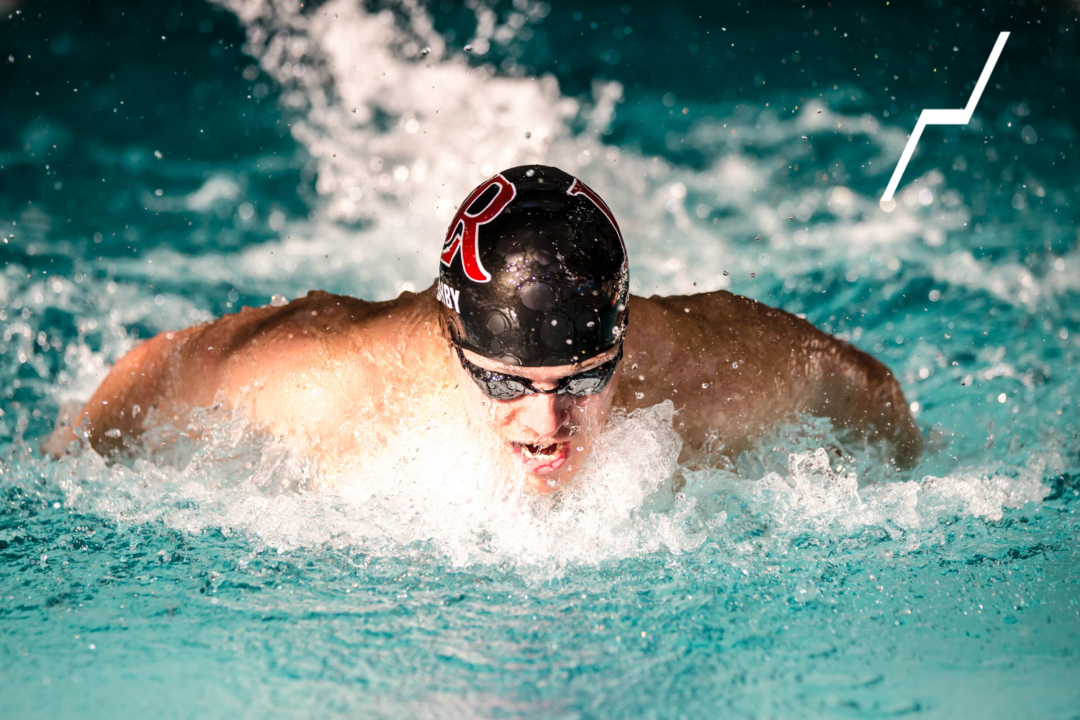It’s not how you start, but how you finish a season that really matters. And a well crafted dryland taper can play a huge part of that success! Of course, swimming is about the journey and overall experience. But we all realize that most swimmers are training up for one big meet in the swim season. Taper, both in and out of the water, is crucial to your athlete’s performance on race day, especially for the “big meet.”
Some people totally dismiss how crucial their dryland taper can be to the overall success of the season. This plays out with some coaches resorting to sticking to the basics of stretching and some light core work on deck one to two weeks out from competition. Some people even think they need to avoid dryland so much that they simply stop it a few weeks out. Both of these approaches are largely ineffective in allowing swimmers to gain the full advantage of a well-planned dryland taper.
In the SURGE Strength Dryland Certification Curriculum, we teach and show coaches like you that dryland should be both progressive and tailored to each individual athlete, even in the tapering phase of a season. By implementing scientifically-backed programming and simultaneously promoting recovery, swimmers can still train hard and swim fast.
Here are three ways you successfully tackle the taper in dryland and end the season swimming fast:
1) Reduce the Volume during Dryland Taper
During taper, swim yardage goes down. It’s crucial that the dryland taper parallels this approach by decreasing the volume in dryland training sessions. Typically, it’s best to reduce volume to 25% of peak total volume by your target week of taper. This means that if you were doing 4 sets at the peak of dryland volume, or when your volume was the highest, you would drop down to 1 set for your final week or two of taper.
Does this mean that we just stop dryland during taper? Of course not!
Swimmers should be able to maintain peak athleticism even as their recovery period unfolds. If trained properly all year, this will take care of itself. As volume decreases, intensity can increase.
These two training variables, volume and intensity within a workout, are inversely related. Picture a graph with two different lines to represent each variable: volume is going down as intensity moves up. At some point these two variables intersect. This is the “sweet spot,” of peak performance. We have to bring the volume down in order to allow for the athletes to be more explosive. This also allows their body to super-compensate, or surpass the fitness level they were at before the taper. If volume is accounted for, we will be at peak performance during taper.
2) Maintain Intensity during Dryland Taper
Let’s look at tackling the dryland taper from a different angle. Sometimes during taper, athletes can start to lose their “feel” of swimming fast, despite what the clock reads. This can also happen during a dryland taper, with an athlete feeling “weak.” If we maintain the intensity of our dryland, and fall back lower on the volume curve, this will help our athletes get back to “feeling” strong and explosive.
Many people shy away from throwing weights around during taper, but the science backs the benefits of it. Remember, if volume is kept in check, intensity should still be maintained to find the “sweet spot” where peak performance can occur. This doesn’t mean that your athletes will be maxing out during taper and totally depleting their energy reserves, or breaking down all of their muscle. But it does mean that they should be challenged with movements of which they are already familiar in order to keep the body in peak performance mode.
To build the athlete’s confidence and keep them working in the right intensity, drop the weight heaviness slightly. For example, if they were barely getting through the last rep of an exercise before taper, during taper, they will be sure they could have gotten at least one or two more reps out of that set. Remember they will only be doing about a fourth of the volume they are used to, so taper dryland sessions should leave them feeling strong, powerful, and ready to compete as they approach race day.
3) Individualized Dryland Taper Programming
In the SURGE Strength Dryland Certification Curriculum, we teach coaches to categorize dryland into three training phases: strength, strength/power, and power. We recommend that leading up to taper your athletes stay in a strength phase for 4-6 weeks. From there you can move into a strength/power phase for 2-4 weeks. Then, they should go into taper with a 1-2 week power phase.
However, it is important to see how your athletes are responding to the different types of training stimulus. Maybe you choose to do a hybrid of all three in taper based on who you are training. It is also worth noting that your programming choice is highly dependent on how experienced your swimmers are with dryland.
Typically, less experienced athletes will do better with less change or phase rotation, whereas an athlete who has been doing dryland for years may respond to cycling through training phases at a faster pace. This is because their bodies have adapted in order to take on a larger load and overall amount of work. It is most effective to decide which approach you will take at the beginning of the season and work backward, leaving a margin of time and workouts to adapt as you get to know your athlete’s true training abilities better.
Conclusion
Taper is a critical time to be aware of how your athletes are responding to training, in order to make sure that the volume and intensity that you’re working at is working. Just like you would in the water, you want to give swimmers a little more rest or a little more push based on how your coach’s eye is viewing them respond to the stimulus. This can only be done if you are paying attention to your athletes and getting to know them along the way.
Taper is the time to build confidence and keep swimmers in a routine that they are familiar. Giving them exercises that they are comfortable doing (with proper technique) is going to yield better results than detraining. And it will work much better than giving them a totally new dryland program, just because they are on taper. The athletes should still be breaking a sweat during dryland and should still feel like they are working hard during each session. However, they should not be left feeling wiped out or sore the next day. By dropping down the volume and hitting the “sweet spot” of intensity, your swimmers will keep their neuromuscular response to training primed while allowing the muscles to super-compensate during this peak training phase.
Keeping programs individualized will ensure that you have done everything you can to help your athletes reach their highest potential on race day. Tackling the taper is not something that happens two weeks before the end of a season. Remember that your dryland taper is developed as the season unfolds and writes itself based on how your athletes respond to your overarching dryland program.
ENROLL IN A DRYLAND 101 COURSE FOR FREE

The goal of SURGE Strength is simple:
BUILD BETTER ATHLETES
GENERATE FASTER SWIMMERS
Courtesy of SwimSwam’s exclusive dryland training partner, SURGE Strength.
SURGE Strength is swim-specific, strength training by Chris Ritter. SURGE Strength builds better athletes and faster swimmers through Dryland Programs, Courses and Certification.





